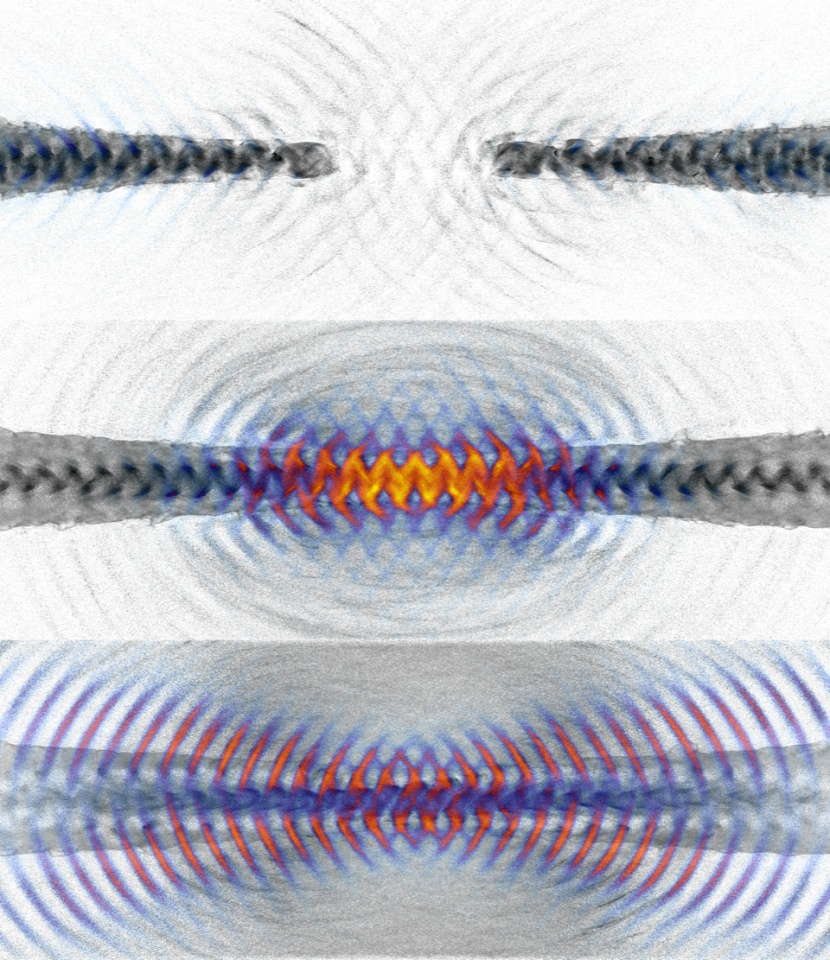Physicists have simulated how to create antimatter in the lab by firing two lasers at a plastic block
Some of the greatest mysteries in cosmology revolve around antimatter, and it’s hard to study because it’s rare and hard to produce in the lab. Now a team of physicists has outlined a relatively simple new way to create antimatter, by firing two lasers at each other to reproduce the conditions near a neutron star, converting light into matter and antimatter.
In principle, antimatter sounds simple – it’s just like regular matter, except its particles have the opposite charge. That basic difference has some major implications though: if matter and antimatter should ever meet, they will annihilate each other in a burst of energy. In fact, that should have destroyed the universe billions of years ago, but obviously that didn’t happen. So how did matter come to dominate? What tipped the scales in its favor? Or, where did all the antimatter go?
Unfortunately, antimatter’s scarcity and instability make it difficult to study to help answer those questions. It’s naturally produced under extreme conditions, such as lightning strikes, or near black holes and neutron stars, and artificially in huge facilities like the Large Hadron Collider.
But now, researchers have designed a new method that could produce antimatter in smaller labs. While the team hasn’t built the device yet, simulations show that the principle is feasible.
The new device involves firing two powerful lasers at a plastic block, one from either side in a pincer motion. This block would be crisscrossed by tiny channels, just micrometers wide. As each laser strikes the target, it accelerates a cloud of electrons in the material and sends them shooting off – until they collide with the cloud of electrons coming the other way from the other laser.
That collision produces a lot of gamma rays and, because of the extremely narrow channels, the photons are more likely to also collide with each other. This in turn produces showers of matter and antimatter, specifically electrons and their antimatter equivalent, positrons. Finally, magnetic fields around the system focus the positrons into an antimatter beam, and accelerate it to an extremely high energy.
“Such processes are likely to take place, among others, in the magnetosphere of pulsars, i.e. of rapidly rotating neutron stars,” says Alexey Arefiev, an author of the study. “With our new concept, such phenomena could be simulated in the laboratory, at least to some extent, which would then allow us to understand them better.”
The team says that the new technique is very efficient, producing up to 100,000 times more positrons than a single laser would, and the input lasers wouldn’t need to be as powerful to begin with.
The resulting antimatter beam can reach energies of 1 gigaelectronvolt (GeV) within the space of just 50 micrometers, which normally requires large-scale particle accelerators.
For now the concept remains speculative, but the team says that the technology to put it into action already exist in some facilities. Doing so could provide new insights into the extreme conditions around black holes and neutron stars, and potentially help us unravel the cosmic conundrum of antimatter.
The research was published in the journal Communications Physics.


